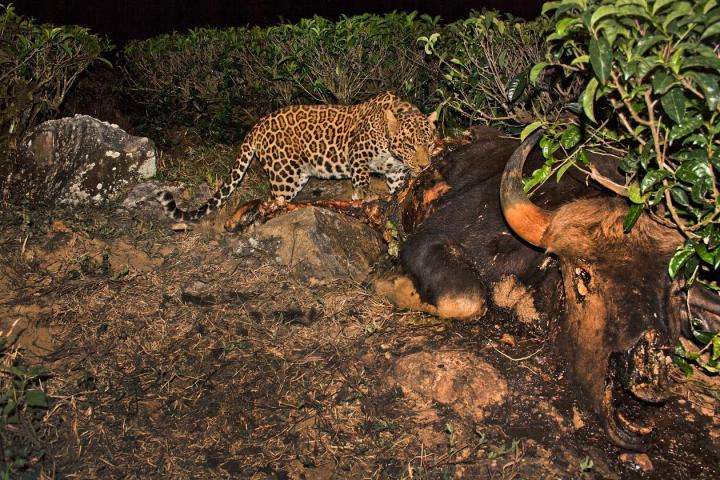Tea-time means leopard-time in India

A new WCS study finds that leopards are abundant in tea-garden landscapes in north-eastern India, but that their mere presence does not lead to conflicts with people.
The researchers modeled habitat-use by leopards based on leopard signs for the first time in a human-dominated, tea-garden landscape and identified nearly 25 percent of areas having high probability of use by leopards was outside of forested patches. Results show that leopards use tea-gardens due to the availability of dense ground vegetation cover, while avoiding areas with a high density of developed areas.
The collaborative study between WCS, Centre for Wildlife Studies-India, National Centre for Biological Sciences-India, Foundation of Ecological Research Advocacy and Learning, and the West Bengal Forest Department was conducted in a tea-garden and forest mosaic in the northern West Bengal state and covered a densely populated area of approximately 600 sq km. The landscape is defined by a matrix of small protected areas interspersed between vast stretches of tea-gardens, agricultural fields, and villages, and is part of the East-Himalayan biodiversity hotspot.
The study mapped more than 170 locations where people were injured by leopards and interviewed approximately 90 of those injured between 2009 and 2016. More than 350 leopard-human encounters were reported during this period, with five resulting in human fatalities. The authors found no significant relationship between the probability of attack and probability of habitat-use by leopards.
Aritra Kshettry, WCS India Program affiliate and lead author of the study said, "Our results indicate that an increased use of an area by leopards, in itself, does not translate to an increased number of attacks on people. The interviews of victims who were attacked by leopards suggest that these encounters are accidental in nature since most of the attacks resulted in minor injuries and occurred during the day while people were working in the tea plantations."
"The results of the study highlight the importance of non-protected human-use areas as conservation landscapes for wide ranging carnivores and also underscore the need to devise effective and proactive mitigation strategies to avoid accidental encounters between people and leopards," says co-author and WCS Scientist Dr. Vidya Athreya. The study also identified hot-spots of leopard-human interactions, providing impetus to developing regional conflict mitigation strategies.
More information: Aritra Kshettry et al, Leopard in a tea-cup: A study of leopard habitat-use and human-leopard interactions in north-eastern India, PLOS ONE (2017). DOI: 10.1371/journal.pone.0177013
Journal information: PLoS ONE
Provided by Wildlife Conservation Society


















